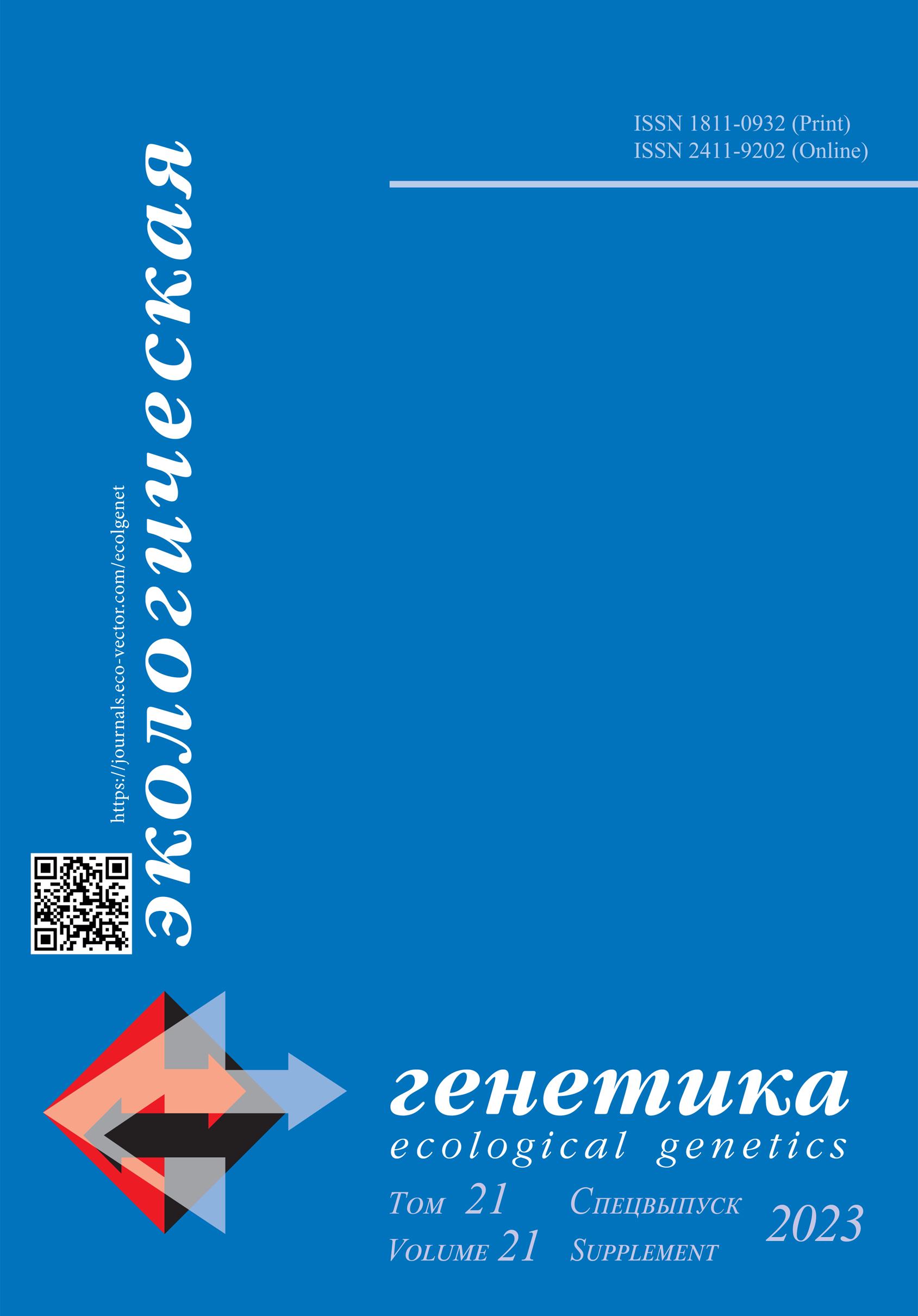Some biochemical characteristics of the hairy roots of Pisum sativum L. mutants
- Авторы: Timina O.1, Timin O.2, Stepanova A.3
-
Учреждения:
- Shevchenko Transnistria State University
- National Scientific Research Institutes of Ecology and Natural Resources
- Timiryazev Institutes of Plant Physiology, RAS
- Выпуск: Том 21 (2023): Спецвыпуск
- Страницы: 40-40
- Раздел: «ГМО: ИСТОРИЯ, ДОСТИЖЕНИЯ, СОЦИАЛЬНЫЕ И ЭКОЛОГИЧЕСКИЕ РИСКИ»
- Статья получена: 12.08.2023
- Статья одобрена: 31.08.2023
- Статья опубликована: 04.12.2023
- URL: https://journals.eco-vector.com/ecolgenet/article/view/568310
- DOI: https://doi.org/10.17816/ecogen568310
- ID: 568310
Цитировать
Полный текст
Аннотация
Two high-protein root cultures of vegetable pea mutants were received [1]. In continuation a PCR analysis of the obtained root cultures genes was carried out according [2] and the amino acid composition of the cultures protein was clarified in a dry product on the AAA 339TM device [3]. Obtained results confirmed the absence of rhizobia contamination of the cultures, which grow steadily on a hormone-free media for 5 years. PCR analysis revealed that four rol genes A, B, C, D were inserted into the genome of the root culture with genotype afaftltl, and two — rol C and rol D — in the genome of the root culture with genotype tltl. The protein composition of the obtained cultures was represented by essential and non-essential amino acids and some others. In four inserts culture, the content of essential, ketogenic, proteinogenic and sulfur-containing amino acids prevailed by 1.5–2 times. Two inserts culture has twice as much aspartic acid and proline. Both cultures lacked tryptophan. The number of inserts determines the amino acid composition most likely.
Ключевые слова
Полный текст
Two high-protein root cultures of vegetable pea mutants were received [1]. In continuation a PCR analysis of the obtained root cultures genes was carried out according [2] and the amino acid composition of the cultures protein was clarified in a dry product on the AAA 339TM device [3]. Obtained results confirmed the absence of rhizobia contamination of the cultures, which grow steadily on a hormone-free media for 5 years. PCR analysis revealed that four rol genes A, B, C, D were inserted into the genome of the root culture with genotype afaftltl, and two — rol C and rol D — in the genome of the root culture with genotype tltl. The protein composition of the obtained cultures was represented by essential and non-essential amino acids and some others. In four inserts culture, the content of essential, ketogenic, proteinogenic and sulfur-containing amino acids prevailed by 1.5–2 times. Two inserts culture has twice as much aspartic acid and proline. Both cultures lacked tryptophan. The number of inserts determines the amino acid composition most likely.
Об авторах
Olga Timina
Shevchenko Transnistria State University
Email: otimina@mail.ru
dr. sci. (biol.), professor, faculty of natural geography, department of botany and ecology
Молдавия, Tiraspol TransnistriaOleg Timin
National Scientific Research Institutes of Ecology and Natural Resources
Email: otimin@mail.ru
Молдавия, Bendery Transnistria
Anna Stepanova
Timiryazev Institutes of Plant Physiology, RAS
Автор, ответственный за переписку.
Email: step_ann@mail.ru
Россия, Moscow
Список литературы
- Timina O, Timin O, Alecsandrova T. Hairy roots of pea mutants with a modified morph leaf type. BIO Web of Conferences. 2020;24:00086. doi: 10.1051/bioconf/20202400086
- Stepanova AY, Solov´eva AI, Malunova MV, et al. Hairy roots Scutelaria spp., (Lamiaceae) as promising producers of antiviral flavones. Molecules. 2021;26(13):3927. doi: 10.3390/molecules26133927
- Garaeva SN, Redkozubova GV, Postolati GV. Amino acids in a living organism. Kishinev, 2009. (In Russ.)
Дополнительные файлы










